System interface contents hidden Samsung how to disable. Several hidden features of Android
Tablets or e-readers. Using the operating system, you can control your device. Back in 2005, Google acquired the rights to this OS, and already in 2008 the first product was released - Android 1.0.
Briefly about the platform
This operating system quickly gained popularity, being under the auspices of one of the largest IT companies. And this is not strange, because even children can figure out how to use this system (which they successfully practice today), and a lot of “stuffing” for the device can be downloaded completely free of charge from one of the Google resources of the same name. Most devices from the largest and most famous companies, such as Samsung, Motorola, HTC, Sony and others, are produced on Android.
According to research and statistics, gadgets released over the past year running this platform account for 75% of all products. The only competition to “Robot” is the IOS operating system, developed for Apple products. But, as it turned out, it accounts for only 15% of devices. This “axis” is currently developing quite actively, because it provides the opportunity to work not only with smartphones and tablets. The versatility of the system allows it to be installed on electronic photo frames, players, media systems in cars and many others.
Android is being developed by the Open Handset Alliance, also created by Google. It is interesting to note that an original family of fonts called “Droid” was created specifically for this “OS”, and each new system released has the name of a dessert. But these names are not chosen at random. Each new version of the “dessert” is named with English letters, which are arranged in alphabetical order.
"Robot" capabilities
So, what is the beauty of this operating system, what is included in the “standard set” of a novice user, and what features of the platform appeal to them?
With the installation of this OS, any device turns into a “smart” gadget. The first and most important function is access to the Internet. Without it, it would be difficult for you to use a gadget running Android. And it’s not even that there would be no ability to download various applications for ease of use or viewing important content. The operating system simply could not receive updates, and they are very important for uninterrupted and proper operation systems. At the same time, thanks to Android and your modern device, you can read books, watch videos or movies and download them to your gadget, chat with friends, listen to music and perform many other functions that you previously did on your computer.
The first thing the Android gadget presents is online services from Google. They include Gmail, navigator, social GOOGLE network+, Google Talk chat, Goggles voice and visual search, calendar, browser, etc.
You won’t find functions such as a calculator, a voice recorder, or even simple games on an Android device, but the installation of such standard applications is handled directly by device manufacturers. And if you need something additional, there is nothing easier than downloading the necessary software, games, music, books, widgets and many other useful “stuffing” in the store Google Play.
But that's not all. The hidden capabilities of Android will surprise any user, but we will talk about them a little later. 10 hidden functions are not all that your device can surprise you with.

Where to start using an Android device?
It is advisable to start using the device by connecting to the Internet. If possible, it is better to use a 3G or Wi-Fi network. You can also use simple mobile Internet, however, its speed leaves much to be desired, and you risk spending a lot on using traffic.
Next, you'll need a Google account. If you haven’t got one yet, it’s not at all difficult to do. You need to go through a short registration: enter your email (this should be Gmail) and come up with a password. After checking this data, you must provide payment information. For the safety of your Money you don't have to worry at all. The form you fill out will indicate that funds will only be debited from your account if you make a purchase. No one will touch the money on the card without your direct consent.
After you start Google account, the Internet services mentioned earlier will already be available to you. Even if you don’t take into account the hidden functions of Android, the system synchronizes perfectly with many third party resources, such as social networks or postal services.

The capabilities of Android allow you to change the gadget’s interface completely at your discretion. Possibility of change virtual keyboard, adding various widgets to the screen or completely changing appearance screen using special programs, launchers.
In general, the variety of functions, add-ons and applications of Android makes the gadget indispensable in almost any life situation. Using apps social networks you can always stay in touch with your friends and share a piece of your life with them, no matter where you are. Payment system applications allow you to quickly and reliably transfer money, pay bills, and top up your account. mobile phone and many other tasks. In order not to get lost in a foreign city and quickly call a taxi, mobile applications from Google will also help you with this.
Hidden features of Android
In addition to the above-mentioned delights and capabilities, Android is also equipped with special secret capabilities that few people know about. Hidden Android features are some “surprises” from the developers. They will make using your device even easier and more interesting. Articles usually list about 10 hidden Android features, but in reality there are many more. Many experienced users have been familiar with them for a long time, and with each release of a new version of “Robot” and every year, these opportunities become more and more numerous. So, here are some of the 10 hidden features of Android 2016.

A small game that was hidden from users
Ever since the release of Android 2.3, developers have been hiding certain “Easter eggs” in their product. For example, the hidden functions of Android 4.4.2 and others allow you to find these “eggs”. What is this, you ask? “Easter eggs” are interesting and hidden features of the system. To get to them, the user must perform a certain series of actions that are not obvious. At the beginning of the article, we talked about the fact that the name of any version of Android is named after some kind of sweet. So, “Easter eggs” are also associated with the treat after which this or that system is named.
Thus, the hidden functions of Android 5.0 allow you to play an extraordinary secret game. By its nature, the game is very reminiscent of the Flappy Bird game of the same name, only instead of a bird you control a small “android”, and instead of pipes that need to be bypassed, there are candies, because this operating system is called Lollipop. The hidden features of Android 5.1 also provide the opportunity to play a similar game. Surely all users are wondering how to launch such a toy on their device?
To do this, you will need to go to “Settings” and select “About phone”. Then we will find the “Android Version” section; you will need to quickly click on it several times. A large bright lollipop will appear on the screen; if you click on it, it will change color, and if you press and do not release quickly, a game will appear on the screen. A great activity when you're bored and don't have access to the Internet, for example.

Remote control of a gadget
Quite a useful function, for some reason hidden very far away. It is especially good if your phone or other device is lost and needs to be found and blocked. Hidden functions of “Android 4.2.2” and higher allow you to track the gadget. To find this option, you need to go to “Settings”, select the “Security” option there and then in “Android Remote Management” click “Device Administrators”. You need to check the box next to “Remote device search” and “Remote blocking”. When the checkbox is ticked in the right place, many users are surprised and ask what to do next?
Further, if you lose your device, you can remotely erase all data, change the lock or lock the screen (you can even choose the time for how long you want to lock it yourself). You can do this from the website google.com/android/devicemanager. You can also download a special application for remote control “Android”. If you fail to encrypt your device, then through the same Google service you can restore all the data that you deleted.
But in order to encrypt an object, you need to select “Encryption” in “Settings” and “Security”. Even if attackers gain access to your device, they will not have access to the data unless they know your decryption password. But think carefully before you encrypt your gadget. Firstly, this process will take quite a bit long term(more than an hour), secondly, every time after unlocking the screen you will have to enter your password. And lastly: if your password is lost, you will no longer be able to access your data. All that remains is to restore the factory settings, and at the same time destroy all the files that you so diligently encrypted from strangers.
The hidden functions of Android don't end there. Go ahead.
Safe mode
Any person who is more or less “friendly” with computers is familiar with the concept of “ safe mode" This mode allows you to log into the system and run only important programs and files. This allows you to identify the problem with the operating system and fix the main errors. Now this function is available to Android users. They will be able to run their device in safe mode and all third-party applications will not work. If they are incompatible with your system, infected with viruses, or simply downloaded by mistake, you can get rid of them.
How to launch this mode on your gadget? Very simple. To do this, hold down the screen lock button as you did to turn off the device. In the “Turn off power” section, you need to hold your finger and then a request to switch to safe mode will appear on the screen. Confirm it and wait for the reboot. The interface will be changed, the icons will become gray, but don’t worry, after loading in normal mode everything will return to its place.

Turn off notifications
Many Android OS users are familiar with how various games and applications can be spammed. They send notifications over and over again, annoying the user terribly. Hidden Android features allow you to disable these notifications and system messages sent by one of the third party applications. To do this, we need to go to “Settings” again and find the “Applications” option there. Then in the list you should find that same annoying application that constantly “spams” and uncheck the “Enable notifications” box at the top. Problem solved. You can disable this function either from one application or from all at once (“Block all”).
Traffic control
Now the traffic mobile internet can be tracked. To many this function will not seem entirely unnecessary. However, this is not at all true. Recently, many operators mobile communications offer packages with limited traffic, for example, a certain number of megabytes per day. With the help, you will know how much you have already used, and it also shows which application has consumed how much. If you do not want to go beyond the established norm, but constantly monitor how much has already been spent in a completely irrational way, you can set a traffic limit. When the set figure is reached, data transfer will automatically turn off.

"Black list"
Sometimes we need to put a ban on incoming call any subscriber. The reasons can be completely different, but the most common of them is that someone is really annoying you with calls, and you don’t want this to happen in the future. There is no specific Black List function for “annoying” subscribers in the Android OS. But there is one small trick. In "Edit Contacts" there is one small parameter"Only voice mail" Click the checkbox and this way you block calls from a specific number.
You can expand the internal memory of the device
Hidden functions of Android 6 allow you to expand the internal memory of your gadget. The memory card has always remained an external storage device. Even though applications can be transferred from the device to the card and vice versa, it did not help the situation internal memory was sorely lacking. Hidden features of Android 6.0 finally made it possible to use a flash drive as an internal drive. Once you insert the memory card into the dedicated slot, you have a choice of two ways to use it. Hidden features of Android 6.0.1 also allow you to expand the internal memory.
This is far from full list all features of the system. We described 7 hidden Android functions, but in reality there are many more. For example, a face recognition function for locking the screen or the ability to send photos to the “cloud”, from where they can be easily restored if deleted by mistake. Also, on the latest versions of this “OS” you can delete or suspend pre-installed applications that simply clog up memory and are of no value to the owner.
Discover this operating system in a new way. We hope this article will help you in this matter.
Android has something called safe mode. Working in this mode, the operating system disables all applications installed by the user, so it can save you if you suddenly infected your smartphone with a screen lock. To activate, just press the power button until the “Power off” button appears, and then hold your finger on it. The smartphone will reboot.
BLACK LIST
Blacklisting of numbers has always been a stumbling block for Android users. The system itself does not provide such capabilities, and the applications available on the market implement blocking of numbers through dirty hacks and not always correctly (most of these applications simply pretend to be a third-party dialer who picks up the phone and immediately hangs up).
However, you can also get blocked in stock Android; to do this, you just need to send unwanted callers to voicemail. To do this, tap on the desired contact, then click the edit icon (“pencil”), then the menu and select the “Voice only” item. mail". There, by the way, you can set a separate ringtone for the subscriber.
QUICK ANSWERS
So-called quick replies are a feature that allows you to quickly send SMS in response to a call. By default, four responses are available: “I can’t talk”, “I’ll call you back”. But it's pretty boring and ordinary. If you want something more creative, the response templates can be edited: “Phone -> menu -> Settings -> Quick replies.”
Disable third-party applications in safe mode, blacklist a contact, and edit quick replies in Android.
LITTLE TRICKS
- To change the case of letters or make words or sentences in an already entered message begin with capital letters, just select the message and press the Shift button until you get the desired result.
- In Android 5/6, you can access quick settings by pulling out the curtain with two fingers.
- You can quickly enable vibration mode in Android 5/6 by pressing the volume key and then tapping the icon on the left side of the slider that appears.
- Android has a screen magnifier. To enable it, go to “Settings -> Special”. options -> Gestures to zoom in.” Now any part of the screen can be enlarged by tapping on it three times.
- To disable automatic creation icons on the desktop, run Play Store, go to settings and uncheck the “Add icons” option.
ADVANCED WI-FI SETTINGS
Android has a completely invisible and unknown to most users settings section with additional Wi-Fi options. To get to it, you need to go to “Settings -> Wi-Fi”, then press the menu key and select “Advanced features”. Here you can disable notifications about detected networks, disable Wi-Fi in sleep mode (I don’t recommend it: working in passive mode, the Wi-Fi module consumes less battery than when turned on/off), prohibit the use Wi-Fi networks with a poor signal and set up Wi-Fi Direct (direct pairing of devices without using an access point).
DISABLE SYNCHRONIZATION
By default, Android enables auto-sync (push notifications) with all services added to the “Settings -> Accounts” section. First of all, this is a Google account, as well as Skype and other services. You may not need most types of synchronization (for example, Google sync+), so it’s better to disable them, you can do it all at once by clicking on the three dots at the top and unchecking the “Auto-sync data” option. But only certain types of data are possible: click on one of the accounts, select the account and remove (or check) the checkboxes.
DISABLE STOCK APPLICATIONS
Have you always dreamed of removing junk that was pre-installed by the manufacturer, which can run in the background or is simply annoying with an unnecessary shortcut to launch in the application list? Luckily, Android allows you to disable many pre-installed apps. Go to “Settings -> Applications” and open the “All” tab. Now you need to go through the list. Choose the right application, and then “Disable”. Now I recommend clicking on “Erase data”. There is a separate “Disabled” tab for frozen applications. Unfortunately, not all applications can be frozen. Which ones depend on the manufacturer.
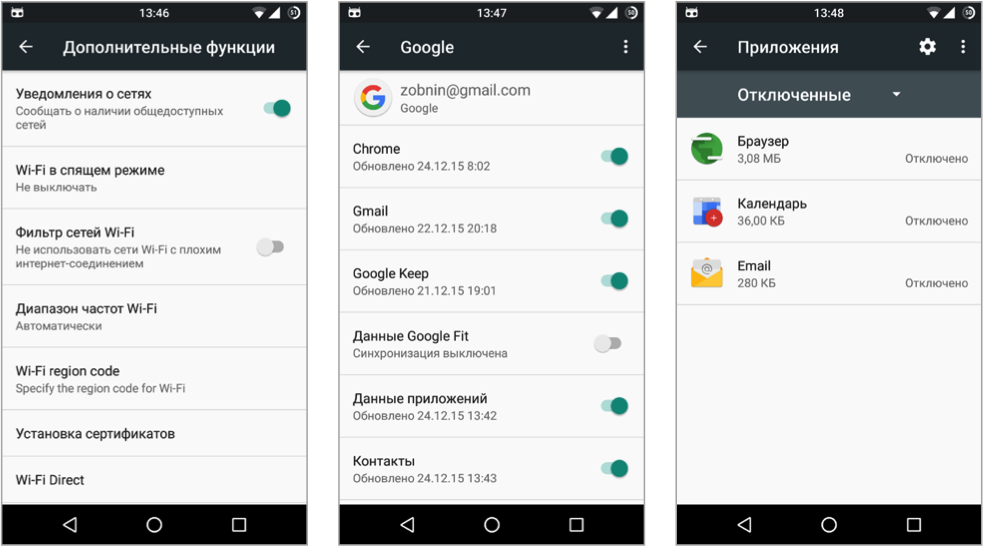
Advanced menu WIFI settings, Disable synchronization and list of disabled applications.
MOBILE TRAFFIC CONSUMPTION CONTROL
In Android without third party programs Internet traffic can be monitored. For this purpose, there is a special “Data transfer” item in the settings. There you can set a traffic limit, upon reaching which a notification will appear, as well as a limit, after which data transfer will be automatically turned off. For each application, separate statistics are kept on data in the background and active modes, a graph is being built. Starting from Android 5.0, this interface is also available in quick settings (blind), by tapping on the mobile network icon.
DISABLED PIN CODE AT HOME
A PIN code is a good way to protect information on your smartphone from prying eyes. But constantly entering a PIN code is quite tedious, especially at home, where it is not really needed. That's why Android has a mechanism to automatically disable the PIN in so-called safe locations. To activate it, go to “Settings -> Security -> Trust Agents” and enable Smart Lock. We return to the “Security” section, click Smart Lock, enter the PIN code. Next, select the “Safe places” item and add any place you like.
DON'T DISTURB MODE AND IMPORTANT CONTACTS
Android 5.0 introduced a new “Do not disturb” mode (in the fifth version it is available when adjusting the volume, in the sixth version - through the icon in quick settings), which makes the smartphone absolutely silent on certain time(or until the alarm goes off). Everything would be fine, but by default the smartphone will still wake you up with calls. Fortunately, this behavior can be changed.
Open quick settings, click on “Do not disturb”, in the menu that opens, click “Settings”, select the “Important only” section. On the screen, among other settings, you will see two items: “Messages” and “Calls”. By default, they say “Only from contacts”, which means that calls and messages will be accepted from everyone who is in your contacts. Best choice will be “Only from marked contacts,” that is, those whom you marked with an asterisk in the dialer. You can also select “From no one”.
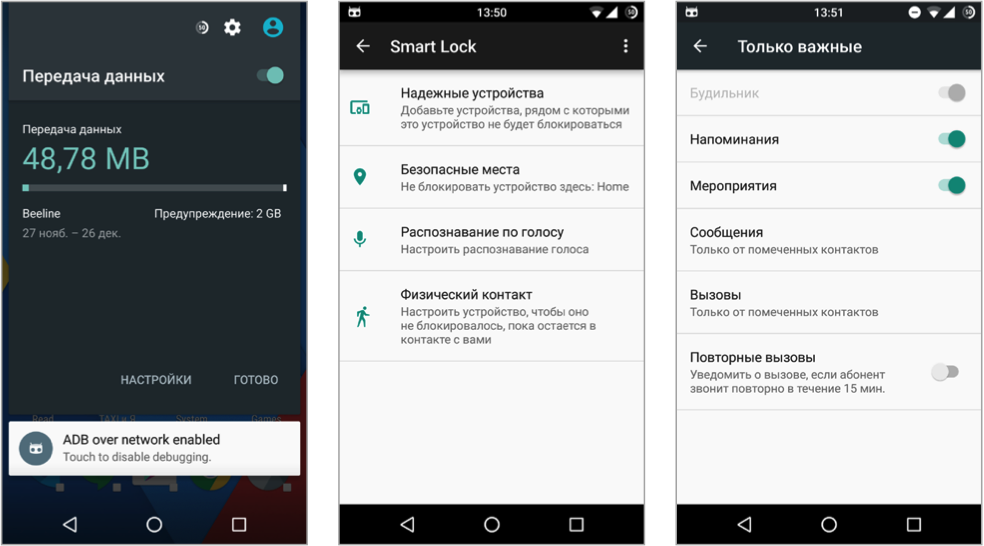
Application traffic monitoring, window Smart settings Lock and setting “do not disturb” mode
DISABLE NOTIFICATIONS
Many applications like to spam notifications, games especially suffer from this, but there can also be quite ordinary applications. Luckily, notifications can be turned off. To do this, open “Settings -> Applications -> All”, find the culprit and select “Notifications”. Here you can either turn off all notifications at once (“Block All”) or allow only “swipe” notifications (“Short Notifications”).
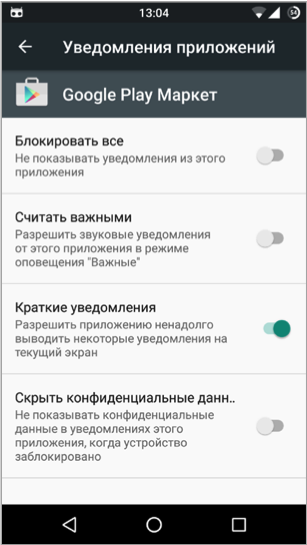
Google Play Store notification settings
EXPANDING THE INTERNAL MEMORY OF THE DEVICE
Android has always had a problem with expanding the internal space of a smartphone. The connected SD card did not allow this, becoming just “external” storage. The function of transferring applications to a memory card, which appeared in Android 2.2, also did not really save the situation. Finally, with Android 6.0, Google finally decided to fix everything. Now, after connecting a flash drive or SD card, the system offers two options:
- use it as a removable storage device (normal mode, as in previous versions);
- do internal storage. In this case, the device will format the flash drive in ext4 using 128-bit AES encryption and mount it as a system partition. Next, a test for reading and writing speed will be carried out. Now, unfortunately, all memory cards are significantly inferior in speed to the memory built into the device, which in theory can lead to slowdowns in the operation of the device. Fortunately, only the time it takes to open a specific application or load part of it (a game location, for example) depends on the performance of the disk subsystem. And all calculations are carried out outside the disk. So there will be no drop in FPS in your favorite game.
LOCKING MODE IN APPLICATION
When it becomes necessary to give a smartphone to a stranger in your hands, there is always a danger that he will want to dig into your messages and other confidential information. To prevent this, you can use the In-App Lock feature, available starting with Android 5.0. An open application cannot be minimized using the Home and Overview buttons; even turning the screen off and on will not help.
To activate this feature, you need to open the “Security” item in the settings, click on “App Lock” and turn on the switch at the top of the page. Next, to lock the screen on the selected application, you need to click the “Browse” button, then the paperclip icon near the screen of the selected application. To unpin, press and hold the “Back” and “Browse” buttons at the same time.
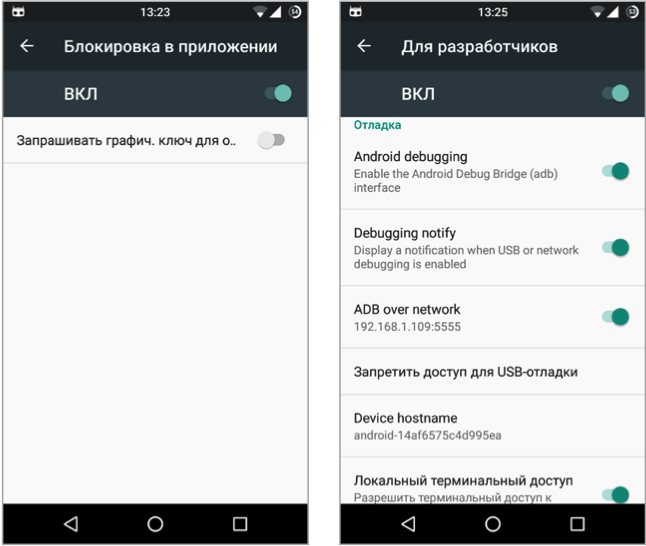
Enable in-app blocking and developer options
DEVELOPER OPTIONS
In the settings, click on the “About phone” item and there we find “Build number”. We tap on it seven times. Now we go back to the settings and see a new section “For Developers”.
- USB debugging. This is what allows your phone to communicate with your computer using the Android Debug Bridge (ADB). Used in environment Android development or to execute ADB commands.
- Pointer location. It will help you check the number of simultaneous touches on the screen and test the touchscreen. Shows touch coordinates and movement trajectory.
- Window animation: scale, transition animation - allows you to adjust the animation speed. The lower the value, the faster. By the way, the settings only work for the system, without affecting applications.
- GPU acceleration. In modern versions, virtually nothing changes.
- Do not disable data transfer - even after connecting to a Wi-Fi network, data transfer over mobile networks will not be stopped (but the data itself will not be transferred). This is done to quickly switch to mobile network when lost Wi-Fi signal. Energy consumption increases slightly.
- Limit of background processes. Maximum amount processes carried out in background. By the way, system applications̆ these settings do not apply.
- Show CPU usage. In the upper right corner, on top of all windows, the names of processes using the processor in real time and a scale of processor load will be displayed.
FINE TUNING THE INTERFACE
Android 6.0 introduced a set of options for tuning the interface, but, like the options for developers, it is hidden by default. To see them, pull out the curtain and hold your finger on the gear at the top of the screen (it should start spinning) until you see a message on the screen. Now the System UI Tuner item should appear in the settings, with which you can change the location and set of buttons in quick settings, enable the display of battery percentage and customize the display of icons in the status bar.

Multi-window mode
MULTI-WINDOW MODE
Another hidden but very useful feature of Android 6.0 is multi-window mode. In theory, it should be activated using a switch in the same developer options, but it is only available in custom Android builds from source or custom firmware. To enable this mode in stock firmware, you need to get root rights, add the line ro.build.type=userdebug to the /system/build.prop file and reboot. The easiest way to do this is using any terminal available on the market.
Android is an operating system with a huge number of possibilities. The threshold for entry into it is not much different from its closest competitor IOS, but Android’s customization functions are much wider. In addition, everyone can master the creation of small utilities for their gadget; they will have to spend very little time on this; to write the simplest programs, it is not necessary to know the Java language, in which everything for this shell is actually created. However, even if you do not touch the technical part and do not reflash the devices, people using this platform have access to the hidden capabilities of Android. This article will look at some of them.
Secret codes for Android: Video
What are hidden functions
These are special options that you can rarely find information about in the gadget’s operating instructions. This could be, for example, a function to launch an application without an Internet connection. Or the ability to use a phone or tablet for purposes other than its intended purpose (an example is the option of connecting a gadget to a TV as a remote control or using the device as a game joystick). Some features do not require special intervention; others will require Root access to activate.
Android Secrets: Video
Now let's look at the most interesting hidden Android features:
Almost every user operating shell service available Google Maps. But it only works online. However, you can use the “Ok map” command to force the system to download a map of the region in question. The download lasts for several minutes, after which the utility can be used without an Internet connection.
This function is ideal for those whose device does not have a built-in GPS module.
- Quick access to your most used contacts. You need to click on an empty area of any desktop, then a line with shortcuts will appear at the very bottom. One of them will be “Contact”. You need to click on it and assign which contact will receive this function. After this, you will no longer need to go into your contacts book; just one click on the desktop is enough.
- Reinsurance in case the phone is stolen or lost. In the second case, there is a chance that a decent person will find it and return the find to the owner. For help, you can register your contacts on the lock screen. First you need to go to the security menu, then “Screen locks” and use the “Owner information” menu. There you need to check the box “Show information about the owner” and enter your data. In addition, it is natural to also come up with a encryption code for blocking.
- An easy way to take a screenshot. As you know, there are several ways to take screenshots on Android. The first is in the menu, which goes down from the top. The second method is a key combination. There is no clear answer as to which of them to use. Each manufacturer activates this option differently. More details about this can be found in the instructions.
- Cleaning option. Android has one big problem, all the utilities that are used in it are not closed, but minimized, which is why they load RAM and drain resources battery. In the new, last iteration to date, it was built special program"Cleaning". After its launch, everything unnecessary is unloaded.
- Program for saving battery charge. Many manufacturers have begun to integrate this into their devices. The utility conducts detailed monitoring and shows what can be done to extend battery life
- Centralized access to files. Another option that was added in version 4.4. Now you don’t need to get Root access to manage files and folders; you just need to use a special manager. The addition of a new “Recent Files” folder was very successful, where by default everything is sent to be uploaded, downloaded or transferred to the device. By default, the management program is called “Explorer”.
- Create an unlimited number of desktops.
Conclusion
With each new version Android, new opportunities appear. Whereby functionality systems are approaching borderlessness. Android features make working with this operating system convenient and enjoyable even for novice users.
Hidden features of Android: Video
1. Hidden mini-games
Starting with Android 2.3, all smartphones have hidden games that can be launched by performing a number of non-obvious actions. Android 6.0 Marshmallow, which is installed on this device. In order to access the mini-game, open “Settings”. Go to the “About device” item. Then quickly click on the “Android Version” item several times. A marshmallow stylized as Android's head will appear on the screen. If you quickly press it a few more times and then hold it for a while, a mini-game will open.
As in previous version, a mini-game in Android 6.0 in the style of Flappy Bird, but with lollipops replaced by marshmallows in the shape of a robot head. The game has funny graphics and, although it looks simple, it is quite difficult to score at least 5 points in it the first time. All you have to do is click on the screen very quickly. If you hold your finger a little too long, then consider yourself a loser.
Another game is built in Google browser Chrome, and, by the way, it also works in the computer version of the browser. To start the game, disconnect from the Internet and try to go to some website. You will see a dinosaur, and if you click on it, the game will begin. Then just click on the screen and overcome obstacles. This is some good entertainment if the Internet suddenly lets you down and you have nothing else to do.
2. Remote control of a smartphone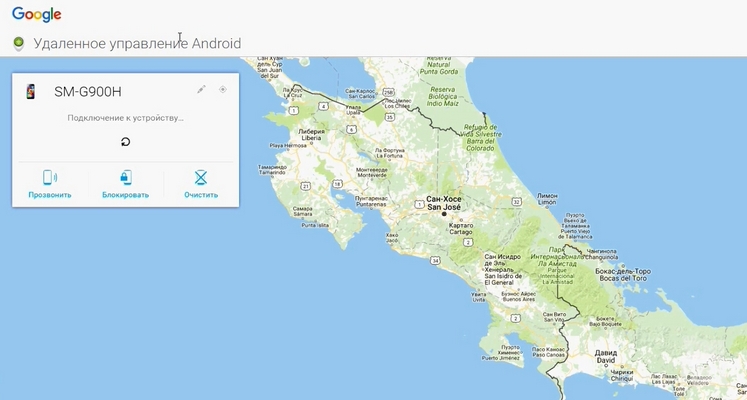
Lost mobile devices on Android based can be found and blocked remotely, but Google hid this option quite deeply. It is activated in the “Settings -> Security -> Device Administrators” menu in the “Remote Android control" At the bottom, click “Enable”. Now that the checkbox is checked, we can manage the device from google.com/android/devicemanager by logging into our Google account. If geodata is enabled on the device, you can see the location of the smartphone. There are also 3 buttons here remote control by telephone. Of course, for all these functions to work, the Internet must be turned on on the lost phone. When you press the “Ring” button, the phone will play for a while at full volume so that passers-by will notice it and pick it up. You can also lock your device and reset its password. And when you click the “Clear” button, all data from the device’s memory will be deleted. However, people who are familiar with Android can easily restore deleted files, unless you have previously encrypted them. To do this, open the “Encrypt device” item in the same “Security” section. The same can be done with a memory card.
3. Owner details
Another useful feature that will help you quickly return your lost smartphone. Properly password-protecting your device and setting an unlock pattern is definitely a good idea. But let's say you lost your phone and a good Samaritan found it and wants to return it to you. How will he know who owns the phone if it is locked? For such cases, it would be a good idea to add owner information to main screen. To do this, go to “Settings” -> “Lock screen” -> “Owner information”. And here you can write your email or your second phone number so that the person who finds your device can contact you.
4. Push notification settings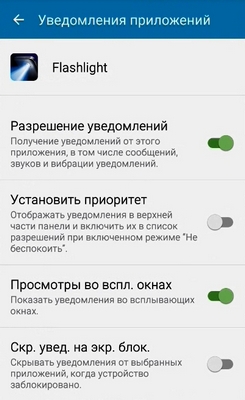
Over time, many applications begin to spam us with unnecessary information, periodically sending unnecessary push notifications to anyone. Games especially suffer from this, but quite ordinary applications can also suffer from this. Fortunately, these notifications can be turned off.
To do this, open “Settings -> Application Manager -> and find the culprit. Then click on “Notifications” and turn them off. You can also do it differently: when you receive a push from the next application, you hold this notification with your finger and click on the icon on the right. Then turn off notifications for this application.
5. Setting up mobile Internet traffic control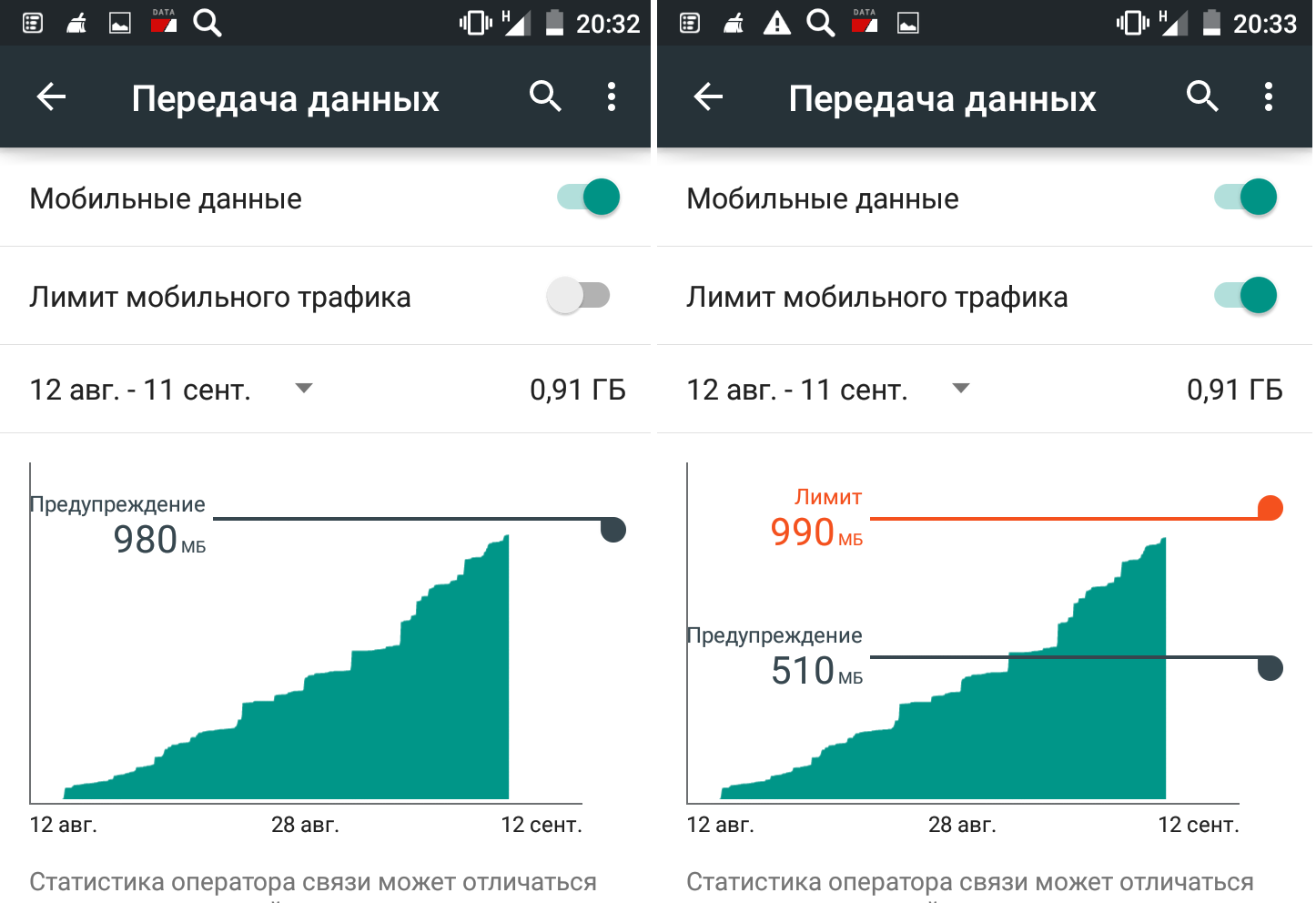
Many mobile operators provide a limited package of free traffic for a month. To control this traffic and not exceed the quota, or to understand how much traffic is left, you can set limits.
For this purpose, there is a separate “Data Usage” item in the settings. There we check the “Mobile data” box, as well as the “Mobile data limit” and then set a traffic limit, upon reaching which a notification will appear, as well as a limit, after which data transfer will be automatically turned off. For each application, separate statistics are kept on data in background and active modes. By going to a specific application, you can view these statistics. And if an application eats up too much traffic in the background, you can check the “Limit background data” checkbox at the bottom.
6. Block calls from specific numbers
It happens that we need to block calls from a specific number. This device has such a function. I go to a certain contact, call up the menu and then click “Add to blacklist”. Perhaps in your version of Android this feature will be called “Voicemail Only”. Check the box and put the contact on the blacklist.
7. Disable adding shortcuts to the desktop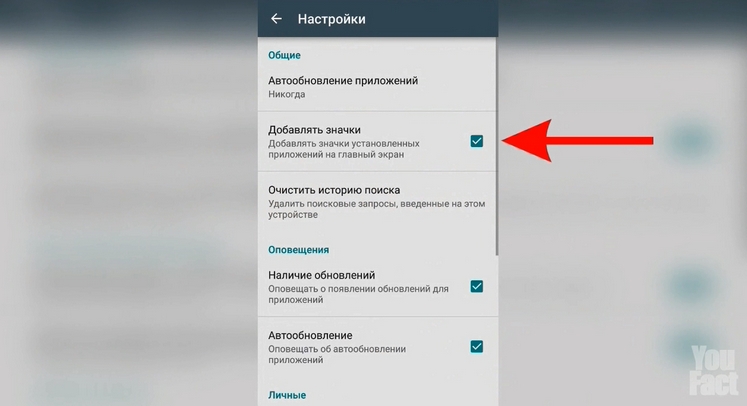
If you don’t like that after installing applications, their icons automatically appear on the desktop in addition to the menu, you can disable this feature. Launch the Play Store, then go to settings and uncheck the “Add icons” option. Now, by default, application icons will only appear in the general list.
8. Safe Mode
One more protective function Android is "safe mode". It deactivates all third party applications. Moreover, in “safe mode” you can delete them if for some reason they are incompatible with your mobile device, ended up in the boot loop by accident, and are also viruses.
To start “safe mode”, press the power button. When the smartphone shutdown menu opens, hold your finger on the “Power off” item for a long time. Then we confirm the boot in safe mode. If this method of entering safe mode does not work for you, then you need to try another way:
1.
Turn off your device. Then press and hold the Power button along with the Volume Down rocker.
2.
When the phone boots up, you can release the Power button, but continue to hold the Volume Down rocker.
3.
When you manage to enter “Safe Mode”, you will see the corresponding text in the lower left corner of the device screen.
After some simple manipulations, the smartphone will boot into “safe mode”. The icons of all third-party applications will be gray. If something happens, you can safely remove them.
How to disable safe mode.
9. Find applications that slow down the system
We find applications that slow down the smartphone. Detailed statistics on running processes- one of the available functions for developers. To switch to developer mode, open “settings” as usual, go to the “about device” tab and click on “Build number” several times in a row. A message below will indicate that you have moved to desired mode. Now go back and go to “Developer Options”. Here we are interested in the item “Running services”. By opening it you can see which program consumes the most random access memory and, if necessary, forcefully terminate it. Another item for developers that you can pay attention to is at the bottom of the list and is called “Do not save operations.” If you check this box, the system will allow you to keep only 1 active application in memory; all others that you previously opened will automatically close. This function is best used in extreme cases when your smartphone is very slow. Because if, for example, you are chatting in Contact and suddenly the phone rings, Contact will automatically close.
10. Disable window animation
And the last, no less useful feature for speeding up your device is disabling window animation. You can also do this in developer options. We find 3 menu items: “Window animation scale”, transition animation and animator duration. At all these points we turn off animation. Now all your applications will open faster. And even if it’s only a split second, it’s still nice.
Write in the comments how else you can speed up your Android smartphone, and also subscribe to
More than 80 percent of smartphones worldwide are powered by operating system, however, not all owners know about all the hidden functions that the phone has. Of course, since its inception, the OC has undergone many changes, and several interesting features have been added that are not so easy to find at first glance. We will tell you about some of them.
Easter Egg
All versions of Android have a so-called Easter egg. IN latest version For Android, it was a game similar to Flappy Bird with obstacles in the form of candies.
In order to see the Easter egg, you need to go to “Settings”, then “About phone” and then click on Android version until the desktop background screen appears. Continuing to tap in a circle, the game will open.

Other versions of the "green robot" have something similar, but the arcade game is only in Lollipop.
There is also an “Easter egg” in Chrome browser, both desktop and mobile. It looks like this. When you do not have an Internet connection, you see a page with a corresponding message. Just above it is a virtual dinosaur made of pixels. So, if you click on the screen, a small toy will start - an obstacle course.
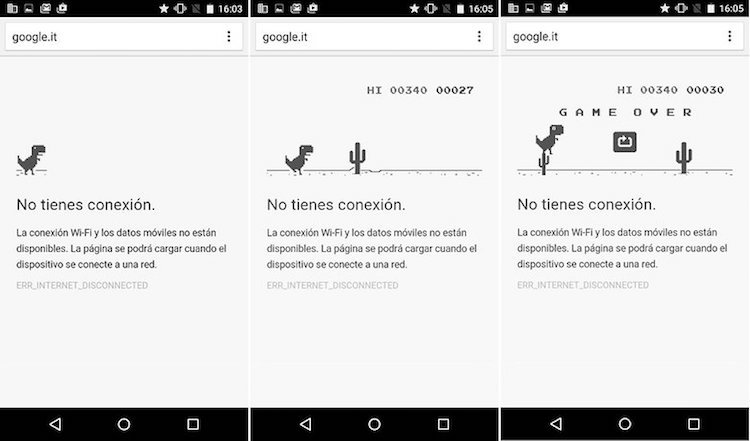
Disable pre-installed applications
Most devices have a pre-installed set of applications that, without resorting to root help cannot be removed from the system. It is likely that you do not use some of them, but nevertheless they constantly make themselves known with notifications and updates. Such programs, as we have already said, cannot be deleted, but they can be disabled. Yes, they will still take up space, but at least they will not be active.
To do this, go to “Settings”, then “Applications” and select a program. On the next screen there will be a “Disable” button, by tapping on which you will “freeze” the application. If you ever need it, just go to the same menu again and click the “Enable” button.
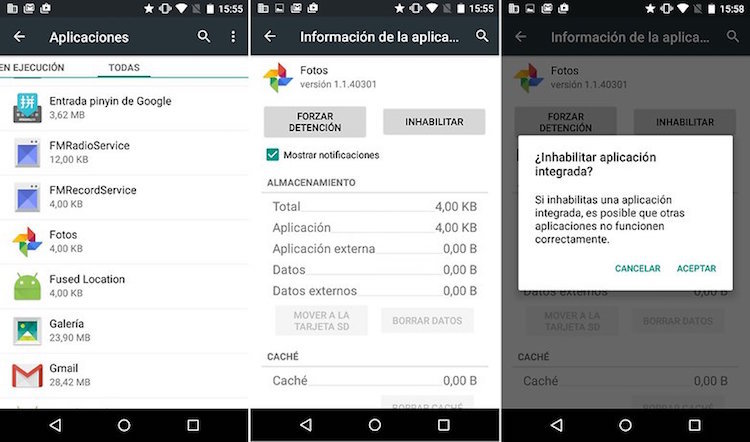
The only thing worth keeping in mind is that disabling some of these programs may affect the operation of others.
Open the quick access menu bypassing the notification menu
A very simple gesture, which, oddly enough, many people do not know about. We are used to swiping down from the top panel to open a menu with notifications. If we do the same again, a quick access menu will appear in front of us. The trick is that you can access the latter directly, bypassing the previous one. To do this, you just need to initially swipe not with one finger, but with two.
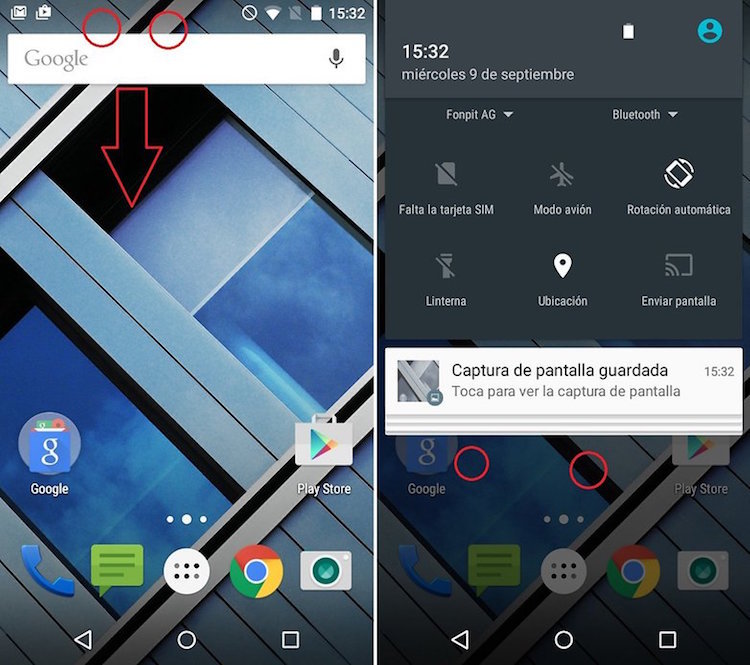
Developer Options
The following are collected on a special screen: interesting features in terms of system control, such as USB debugging, displaying clicks on the display, setting the delay time for opening new windows, etc.
To access these options, go to “Settings”, then “About phone” and tap on the build number 10 times in a row. After this, it will appear in the settings new inset- menu with options for developers.
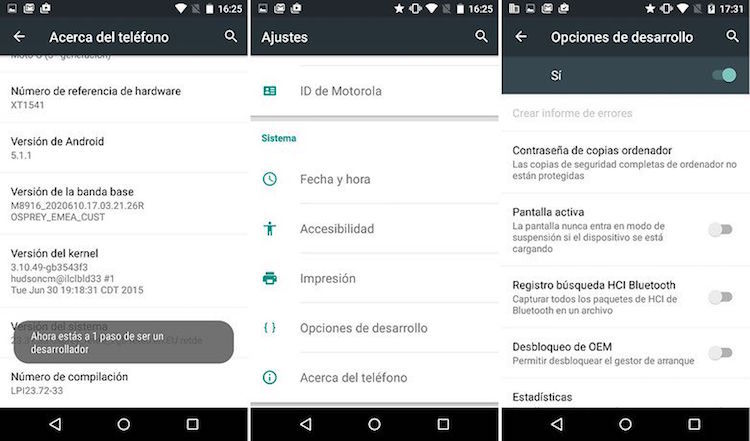
What other non-obvious Android features do you know?
Based on materials from AndroidPIT
Several hidden features of Android Dmitry Borovskikh
